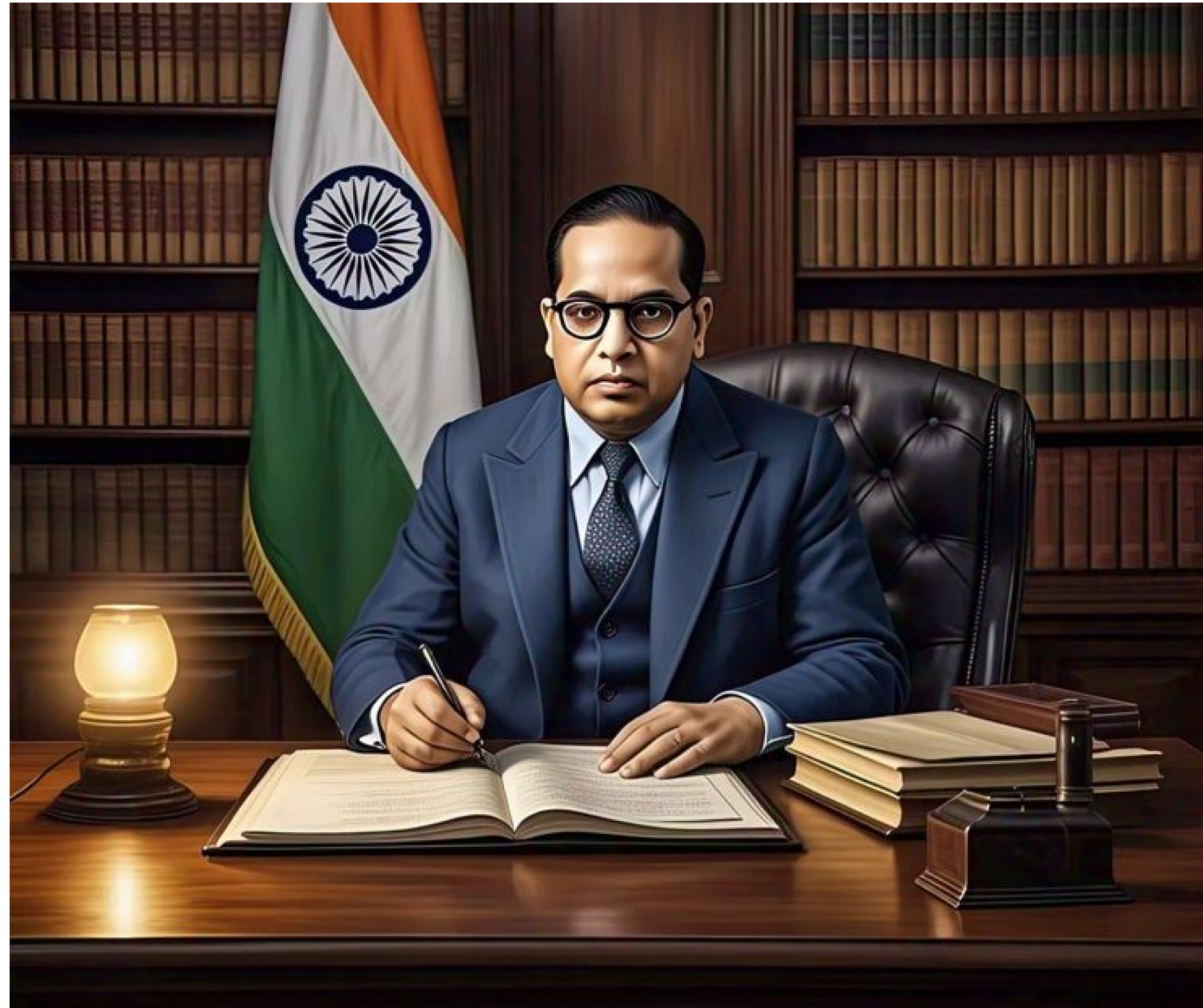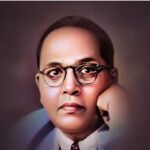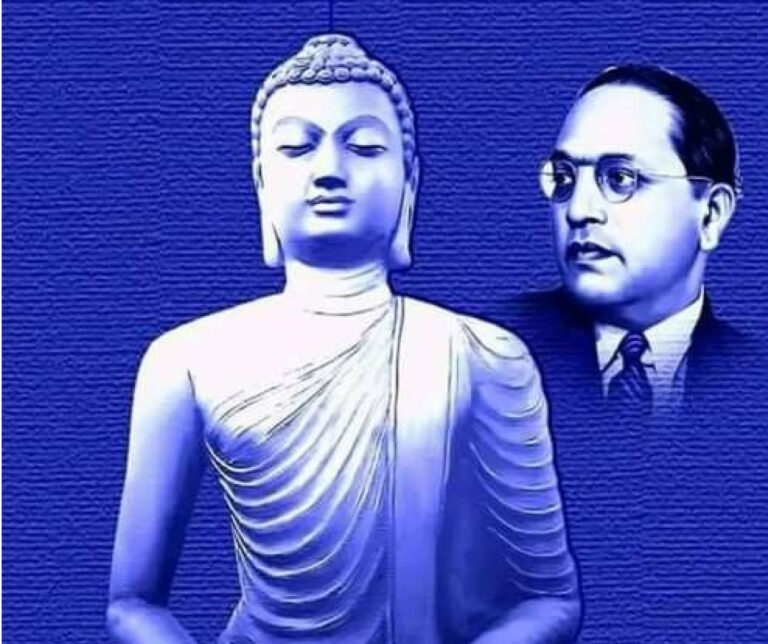Dr. B.R. Ambedkar, the chief architect of the Indian Constitution, was a visionary leader who believed education was the most powerful tool for social change. Born into the marginalized Dalit community, he faced severe discrimination but overcame barriers through education. His thoughts on education were not just about literacy but about liberation—freeing oppressed communities from caste-based oppression and economic exploitation.
This article explores Ambedkar views on education, its role in social reform, and its relevance in modern India. Whether you’re a student researching or writing a Dr. Ambedkar thoughts on education essay in English or someone interested in social justice, this guide provides a clear, well-researched perspective.
Why Education Was Central to Ambedkar’s Vision
Ambedkar viewed education as a weapon to fight injustice. His famous quote—
“Education is the milk of the tigress. Whoever drinks it will roar.”
—highlights his belief that education empowers individuals to challenge inequality. Unlike traditional views that saw education merely as a means to get jobs, Ambedkar saw it as:
- A Tool for Social Liberation – He believed education could break caste barriers by fostering critical thinking.
- A Means of Economic Upliftment – Education opens doors to better jobs, reducing dependency on exploitative labor.
- A Foundation for Democracy – An educated citizenry is essential for a functioning democracy.
Ambedkar’s Personal Struggle for Education
Ambedkar’s life was a testament to his beliefs. Despite facing caste discrimination like being forced to sit outside classrooms, he earned multiple degrees, including a PhD from Columbia University. His journey proved that education could dismantle social hierarchies.
Key Principles of Ambedkar’s Educational Philosophy
1. Education as a Right, Not a Privilege
Ambedkar argued that education should be accessible to all, especially Dalits, women, and other oppressed groups. He criticized the Brahminical system that historically denied Shudras and Dalits access to knowledge.
“The backward classes have come to realize that after all, education is the greatest material benefit for which they can fight.”
2. Critical Thinking Over Blind Faith
Ambedkar opposed rote learning and religious dogma. He believed education should encourage questioning and reasoning.
- Example: He rejected Manusmriti’s caste laws, advocating for scientific and rational education instead.
3. Women’s Education for Social Progress
Ambedkar stressed that educating women was crucial for societal reform. An educated mother, he argued, could raise enlightened children, breaking cycles of oppression.
4. Modern and Technical Education
He emphasized vocational and technical training to help marginalized communities gain economic independence.
“Cultivation of mind should be the ultimate aim of human existence.”
Ambedkar’s Contributions to Indian Education
1. Role in Shaping India’s Education Policies
As India’s first Law Minister, Ambedkar laid the foundation for inclusive education:
- Reservations in Education: He advocated for quotas for SC/ST students, ensuring access to schools and colleges.
- Free and Compulsory Education: His ideas influenced Article 21A of the Constitution, making education a fundamental right.
2. Founding Educational Institutions
Ambedkar established:
- People’s Education Society (1945) – Promoted colleges for Dalits and minorities.
- Siddharth College (Mumbai) – One of the first colleges offering quality education to lower castes.
Ambedkar’s Core Principles vs. Today’s Education System
1. Education as a Fundamental Right
Ambedkar’s View:
- Believed education should be a constitutional right for all, especially Dalits, Adivasis, and women.
- Pushed for state-funded schools to ensure accessibility.
Modern Policy (RTE Act, 2009):
- Provides free & compulsory education for children aged 6-14.
- Gap: Many marginalized children still drop out due to poverty or caste discrimination.
- Example: A 2022 NCRB report found that 32% of SC/ST students leave school before Class 10.
2. Reservations in Education
Ambedkar’s View:
- Advocated for reservations to correct historical injustices.
- Those quotas were a temporary measure until equality was achieved.
Current Scenario:
- SC (15%), ST (7.5%), and OBC (27%) reservations exist in the government. colleges.
- Gap: Private institutions resist quotas; elite universities like DU have fewer SC/ST faculty.
- Case Study: In 2023, only 9% of IIT professors were from SC/ST backgrounds (Source: RTI Data).
3. Critical Thinking vs. Rote Learning
Ambedkar’s View:
- Opposed blind memorization; wanted education to encourage questioning.
Today’s System:
- Still exam-centric, with a focus on marks over understanding.
- Positive Shift: NEP 2020 promotes critical thinking, but implementation is slow.
4. Women’s Education
Ambedkar’s View:
- Strongly supported girls’ education to break patriarchal norms.
Current Status:
- Female literacy improved (77% in 2024 vs. 54% in 2001).
- Gap: Dropout rates rise in rural areas after puberty due to child marriage.
Where Modern Policies Succeed & Fail
Successes:
✅ Digital Education (SWAYAM, e-Pathshala) – Helps marginalized students access learning.
✅ Scholarships for SC/ST Students – Post-matric schemes reduce financial barriers.
✅ NEP 2020’s Inclusion Focus – Promotes multilingual and vocational education.
Failures:
❌ Caste Discrimination in Schools – Many Dalit students face segregation.
❌ Poor Quality of Govt. Schools – Lack of infrastructure and trained teachers.
❌ Privatization of Education – Expensive private schools exclude the poor.
What Would Ambedkar Say About Today’s System?
- He’d Demand Stronger Enforcement of RTE – Many states still lack proper implementation.
- He’d Fight for More SC/ST Teachers – Representation matters in inspiring students.
- He’d Oppose Commercialization – Education should not be a luxury.
- He’d push for an Anti-Caste Curriculum – Textbooks still glorify caste hierarchies.
How to Align Modern Policies with Ambedkar’s Vision
| Ambedkar’s Ideal | Suggested Reform |
|---|---|
| Free education for all | Strengthen RTE with stricter penalties for violations |
| Critical thinking | Reduce exam pressure; focus on analytical learning |
| Social justice in education | Mandate caste-sensitivity training for teachers |
| Women’s empowerment | More girls’ hostels & safety measures in schools |
Relevance of Ambedkar’s Ideas Today
Despite progress, India still faces educational disparities:
- Dalit Literacy Rate (2024): 66% (compared to 84% national average) (Source: NSO Survey)
- Dropout Rates: SC/ST students still face discrimination, leading to higher dropout rates.
Ambedkar’s vision reminds us that:
- Reservations are still needed to level the playing field.
- Education must be value-based, not just job-oriented.
- Digital Divide must be addressed to ensure equal access.
Conclusion: Education for Empowerment
Dr. Ambedkar’s views on education were revolutionary. He didn’t see it as just books and degrees but as a force for justice. His ideas remain crucial today, as millions still fight for equal opportunities.
If India truly wants to honor Ambedkar’s legacy, it must ensure:
✔ No child is denied education due to caste or poverty
✔ Eliminate caste bias in classrooms
✔ Improve the quality of government schools
✔ Make higher education truly inclusive
✔ Critical thinking is prioritized over memorization.
✔ Technical and vocational training reaches marginalized communities.
As we reflect on Dr. Ambedkar’s Views on Education, let’s remember: his fight was not just for literacy, but for dignity. The real test of India’s education system is whether it uplifts the weakest, just as he envisioned.











